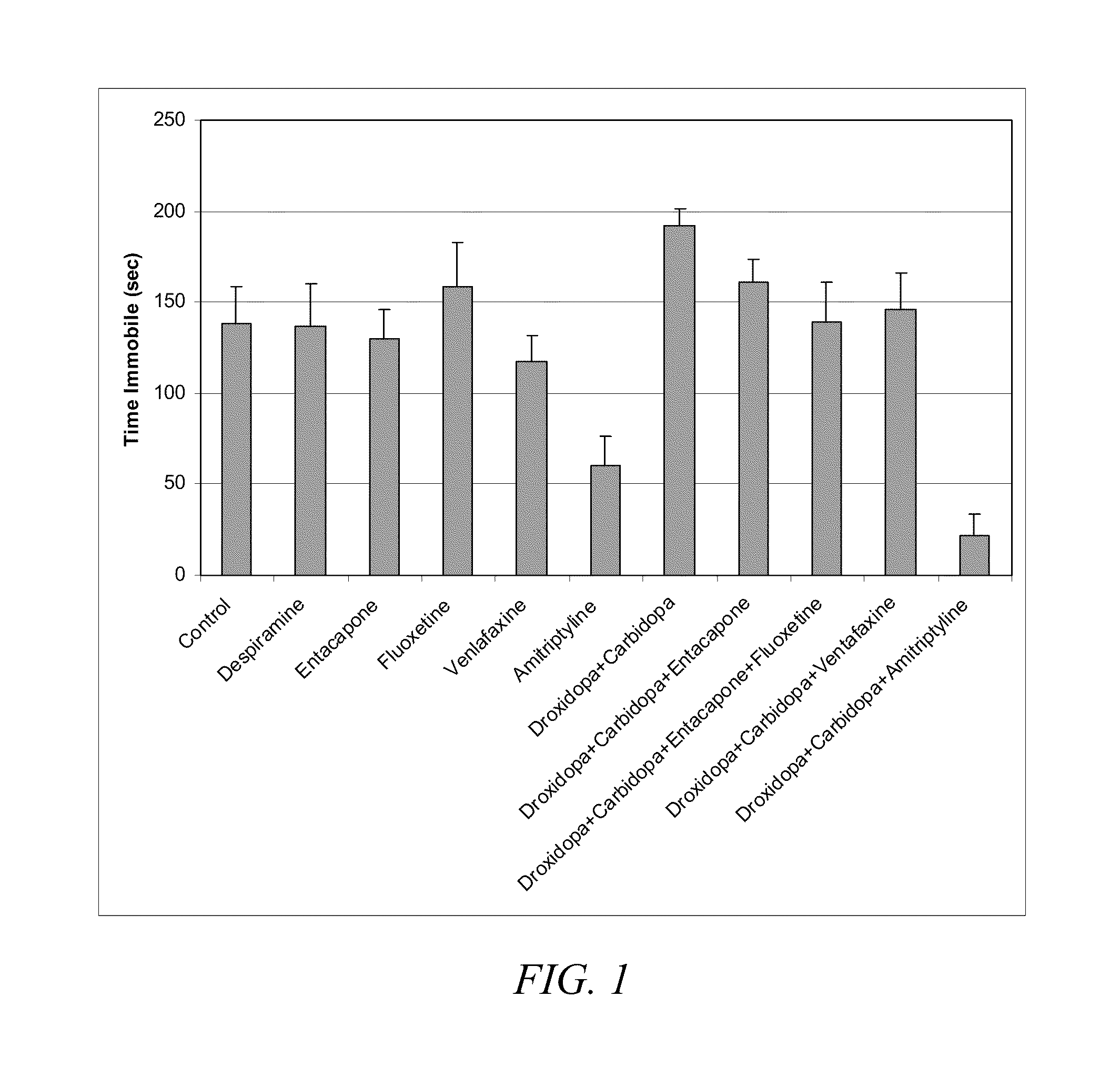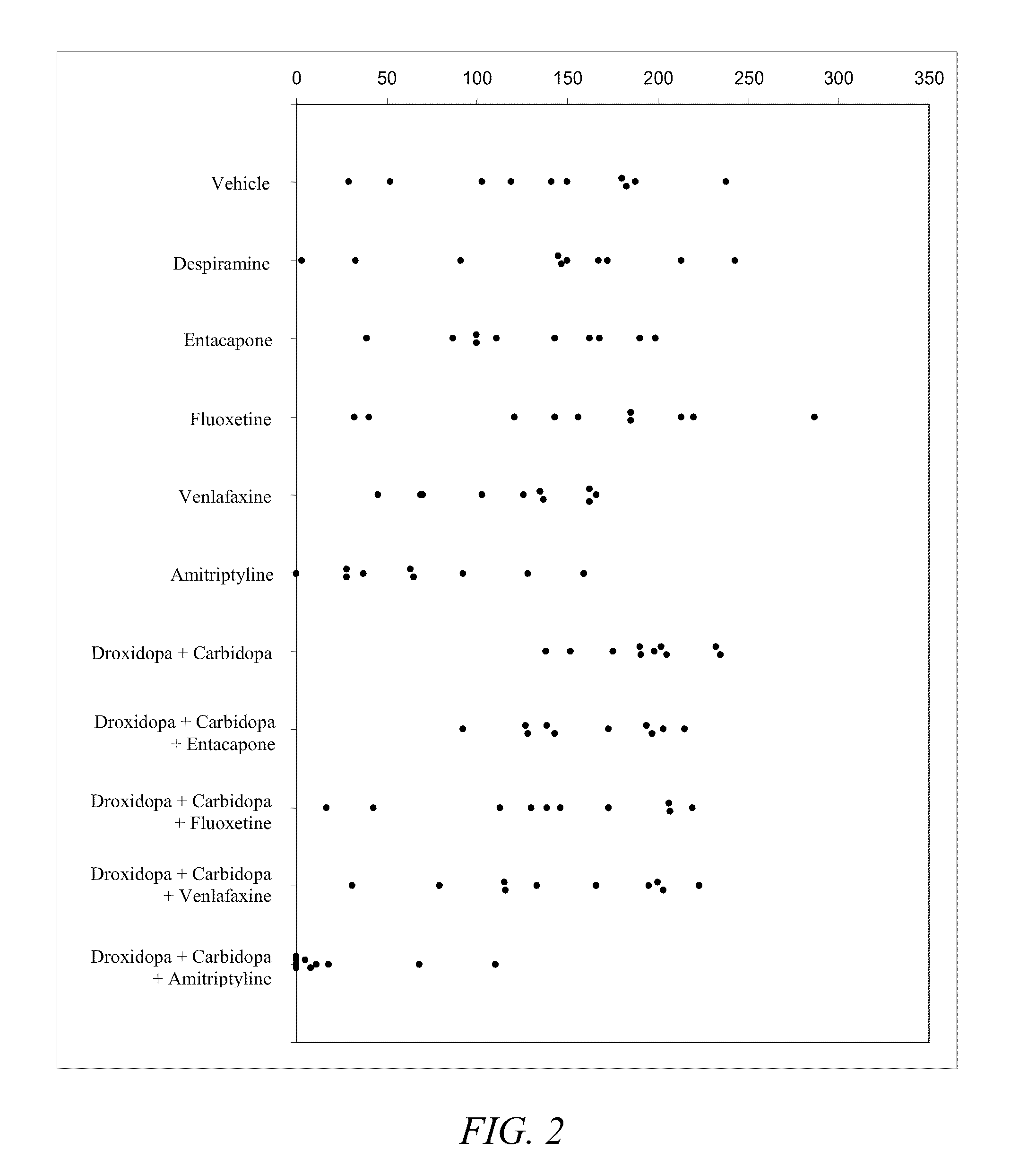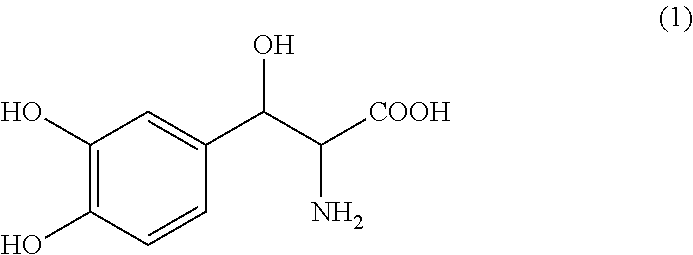Droxidopa and pharmaceutical composition thereof for the treatment of mood disorders, sleep disorders, or attention deficit disorders
a technology of mood disorders and pharmaceutical compositions, applied in the field of various conditions, can solve problems such as affecting the quality of life of patients, so as to reduce the frequency of occurrence of symptom, reduce the severity of symptom, and eliminate the symptom
- Summary
- Abstract
- Description
- Claims
- Application Information
AI Technical Summary
Problems solved by technology
Method used
Image
Examples
example
Treatment of Depression
[0213]The effect of droxidopa, alone or in combination with other drugs, in the treatment of depression was evaluated using the murine Forced Swim Test (FST), a mouse model of depression commonly used to evaluate antidepressive drugs. Depression (i.e., “learned helplessness” as evaluated by the FST model) was measured using the method of Porsolt et al., Arch. Int. Pharmacodyn. (1977), 229: 327-336. Briefly, male CD-1 mice weighing 22 g (±2 g) were fasted overnight prior to testing. The mice were randomized into 11 groups of 10 mice each. Mice in each group were treated with the vehicle alone, a drug, or a drug composition as outlined in Table 1 and returned to their respective groups.
TABLE 1TestConc.DosageGroupCompositionRoutemg / mlml / kgmg / kg1VehicleIntraperitonealNA10NA2DesipramineIntraperitoneal510103EntacaponeIntraperitoneal10304FluoxetineIntraperitoneal10185VenlafaxineIntraperitoneal10106AmitriptylineIntraperitoneal10107Droxidopa +Intraperitoneal10400Carbid...
PUM
| Property | Measurement | Unit |
|---|---|---|
| time | aaaaa | aaaaa |
| time | aaaaa | aaaaa |
| time | aaaaa | aaaaa |
Abstract
Description
Claims
Application Information
 Login to View More
Login to View More - R&D
- Intellectual Property
- Life Sciences
- Materials
- Tech Scout
- Unparalleled Data Quality
- Higher Quality Content
- 60% Fewer Hallucinations
Browse by: Latest US Patents, China's latest patents, Technical Efficacy Thesaurus, Application Domain, Technology Topic, Popular Technical Reports.
© 2025 PatSnap. All rights reserved.Legal|Privacy policy|Modern Slavery Act Transparency Statement|Sitemap|About US| Contact US: help@patsnap.com



